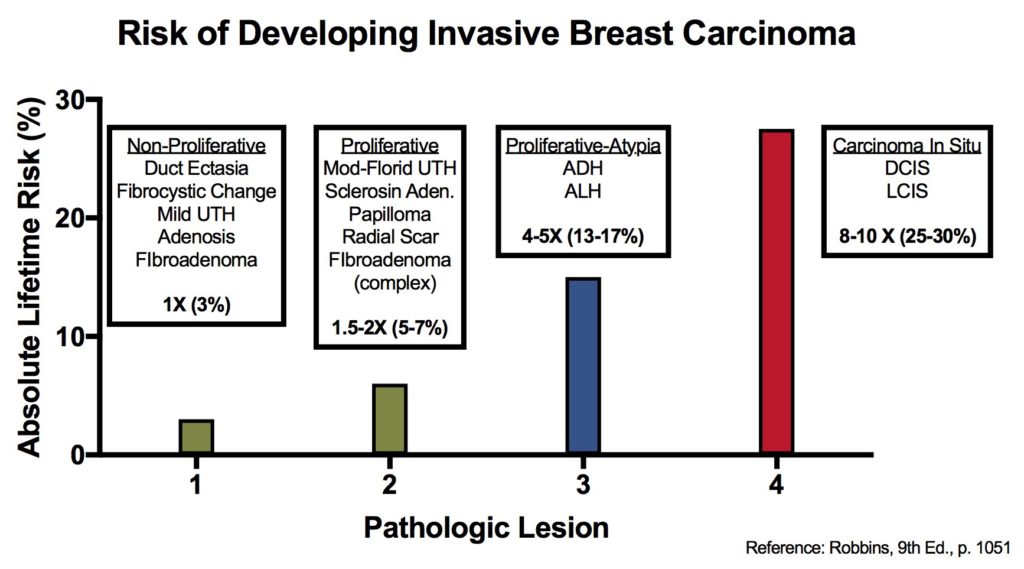A relatively uncommon, but occasionally encountered diagnostic dilemma is differentiating between a poorly differentiated primary urothelial carcinoma and a primary prostate carcinoma at the bladder neck. Commonly used antibodies in the past, such as PSA and PSAP, while very specific, have shown significant loss of sensitivity in less differentiated prostate carcinomas. Newer markers (GATA-3, S-100P, p63, p501s, NKX3.1, and PSMA) have shown great promise with improved sensitivity and excellent specificity compared to traditional antibodies (CK7, CK20, PSA, and ERG). The article cited below does an excellent job in highlighting the comparison of these antibodies, including the pros and cons. In an article by Goldstein, the sensitivity/expression of PSA appeared closer to 50%.
Table 1. Prostate vs. Urothelial Carcinoma in poorly differentiated lesions at the bladder trigone (Mohanty, et. al.)
|
Antibody
|
Prostate
Adenocarcinoma (N=20)
|
Urothelial
Carcinoma (N=16)
|
|
|
0%
|
100% (16)
|
|
|
0%
|
88% (14)
|
|
|
0%
|
75% (12)
|
|
|
0%
|
56% (9)
|
|
|
15% (3)
|
75% (12)
|
|
|
20% (4)
|
63% (10)
|
|
|
25% (5)
|
0%
|
|
|
100% (20)
|
0%
|
|
|
100% (20)
|
0%
|
|
|
100% (20)
|
0%
|
|
AR
|
100% (20)
|
13% (2)
|
|
ERG
|
35% (7)
|
0%
|
PSA expression and other markers as a function of Gleason score (Goldstein, NS)
|
Gleason Score
|
PSA
|
CK7
|
CK20
|
PAP
|
|
6 (N=25)
|
100%
|
0%
|
0%
|
100%
|
|
7 (N=50)
|
98%
|
0%
|
2%
|
100%
|
|
8 (N=54)
|
56%
|
0%
|
4%
|
65%
|
|
9 (N=58)
|
52%
|
10%
|
16%
|
74%
|
|
10 (N=38)
|
47%
|
13%
|
26%
|
61%
|
Prostate specific antigen (PSA), Prostatic acid phosphatase (PAP). Reactivity was defined as >25% positive cells.
Practicality Comment
In most immunohistochemistry labs, it is not practical to have “all” of the new and “exciting” antibodies, but there are several above, which are very practical in a general pathology practice laboratory. GATA-3 is a very good marker for both breast and urothelial carcinomas. Some issues of specificity have arisen, which should always be considered in the context of the differential diagnosis. P63 is a commonly used marker in lung squamous cell carcinomas. Additionally, one may want to consider adding one of the newer prostate antibodies (e.g. p501s, NKX3.1, or PSMA), but again one should consider the specificity of the antibody in the context of the differential diagnosis.
References
Mohanty SK, Smith SC, Chang E, et al. Evaluation of contemporary prostate and urothelial lineage biomarkers in a consecutive cohort of poorly differentiated bladder neck carcinomas. Am J Clin Pathol. 2014;142(2):173–183. doi:10.1309/AJCPK1OV6IMNPFGL.
Goldstein NS. Immunophenotypic characterization of 225 prostate adenocarcinomas with intermediate or high Gleason scores. Am J Clin Pathol. 2002;117(3):471–477. doi:10.1309/G6PR-Y774-X738-FG2K.




